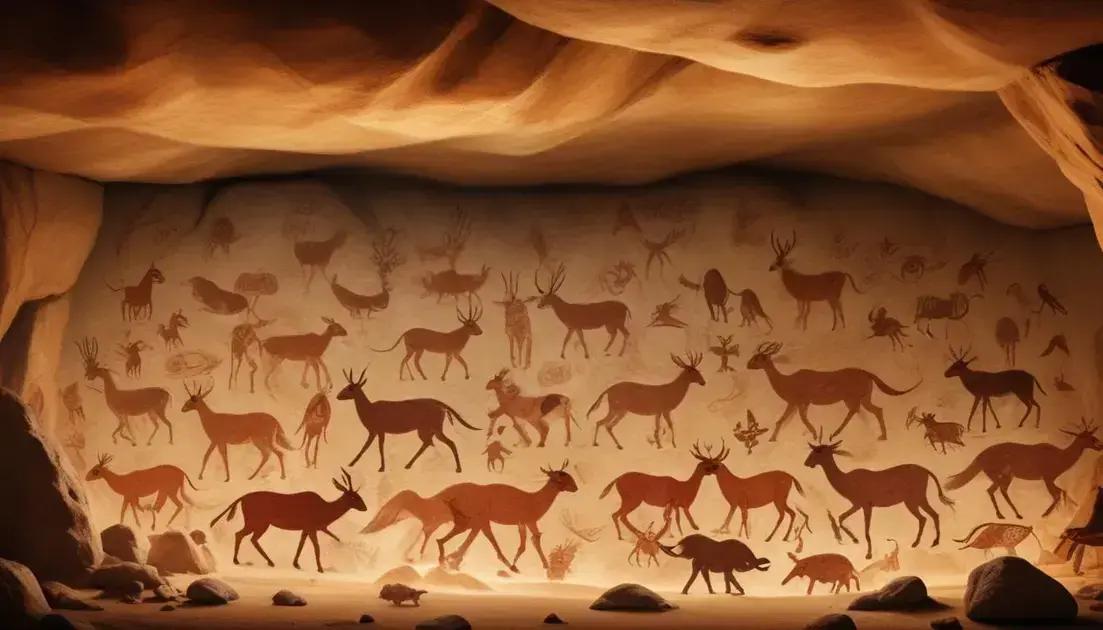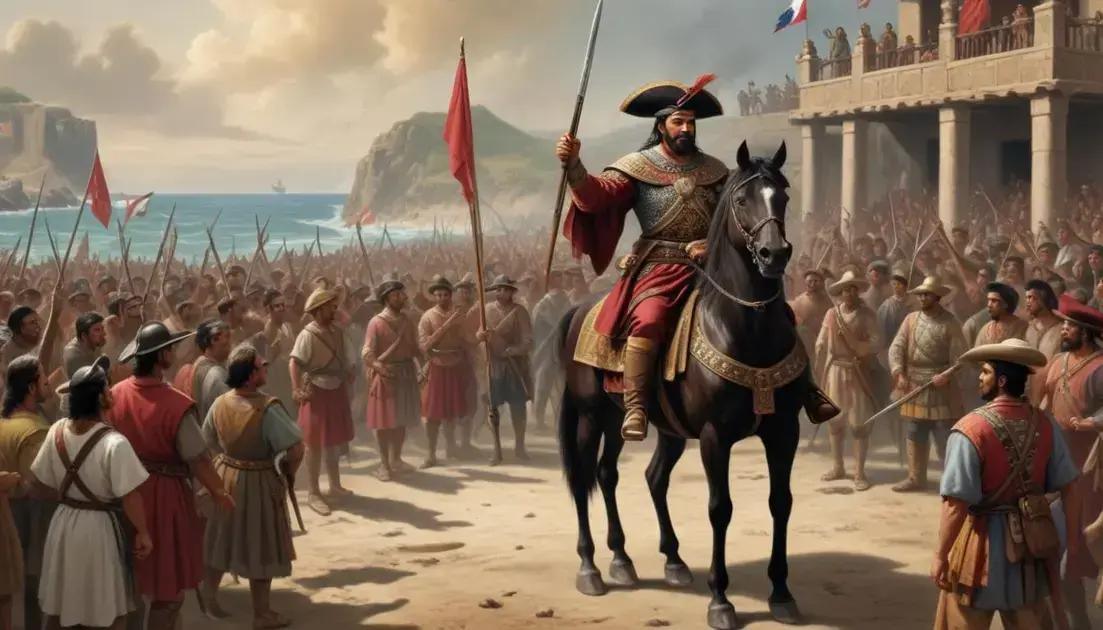
Cave Art: The First Records of Human Imagination
Cave art represents the early expressions of human creativity and culture, showcasing techniques and materials used by our ancestors. Key locations such as the Altamira Cave and Lascaux Cave provide valuable insights into their social structures and beliefs. These ancient artworks inspire modern interpretations, helping us appreciate our cultural heritage and the enduring power of artistic expression. Studying cave art allows us to connect with our past and understand the evolution of human communication and creativity.
Cave art stands as a testament to the dawn of human expression, showcasing our earliest attempts at creativity. What drove our ancestors to depict their world in such vivid imagery? Let’s delve into this fascinating glimpse of our past…
A brief history of cave art
The history of cave art is fascinating and stretches back thousands of years. Early humans created these stunning drawings in various caves across the world. These artworks often depict animals, human figures, and symbols. They give us clues about how our ancestors lived and thought.
Most cave paintings were discovered in regions like Europe, Africa, and Asia. Some of the oldest known examples can be found in the Chauvet Cave in France. Researchers believe these artworks date back over 30,000 years.
Early cave artists used natural pigments made from minerals. They crushed stones or mixed animal fat with earth to create colors. These materials allowed them to paint on cave walls and create lasting images.
The purpose of cave art is still debated. Some believe it was a form of communication or storytelling, while others think it might have been linked to hunting rituals or spiritual practices.
Animals are often the central focus of these paintings. Early humans may have painted their prey, believing it would enhance hunting success. Interestingly, these artworks show a deep understanding of animal behavior.
Cave art isn’t just a glimpse into the past; it’s a window into the minds of our ancestors. Their creativity and imagination shine through these ancient images, reminding us of our shared human experience.
Significance in understanding early human life
The significance of cave art lies in its ability to offer insights into early human life. These ancient images help us understand how our ancestors viewed the world. They provide clues about daily activities, social structures, and even spiritual beliefs.
Cave art acts as a window to the past. Through these artworks, we can see the animals they hunted and the tools they used. This gives a clearer picture of their survival strategies.
Moreover, cave paintings suggest the development of communication. Early humans likely used symbols to convey messages or tell stories. Understanding these symbols can help us grasp how thoughts and ideas evolved.
The social aspect of cave art is also noteworthy. The collaborative effort of creating these images indicates strong community ties. Groups would gather to share skills and traditions, highlighting their social dynamics.
Lastly, cave art reflects creativity and imagination. It shows that even in ancient times, humans expressed themselves artistically. This urge to create is a defining trait of our species, linking us to our ancestors.
Key locations and findings
There are several key locations around the world where cave art has been found. These sites provide important insights into early human culture. One famous site is the Altamira Cave in Spain. Here, vibrant paintings of bison have amazed visitors for decades.
Another significant location is Lascaux Cave in France. The paintings here are approximately 17,000 years old and depict various animals, including horses and deer. This cave shows the deep connection between early humans and their environment.
In Africa, the Blombos Cave in South Africa holds remarkable evidence of early creativity. Researchers discovered engraved ochre pieces, which suggest that symbolic thinking existed much earlier than we thought.
Australia’s Kakadu National Park also features stunning rock art. Indigenous Australians have been creating these artworks for thousands of years. They not only tell stories but also preserve the history of their people.
Finding these paintings is vital for understanding our past. They give clues about how ancient people lived, what they valued, and how they viewed the world around them.
Cave art techniques and materials
Cave art techniques and materials vary greatly among ancient cultures. Early humans used what they found in nature to create stunning images. Pigments were often made from natural sources like ochre, charcoal, and minerals. These materials allowed them to create colors like red, black, and yellow.
Painting techniques included using fingers, brushes, or even blowing pigment through hollow bones. This created different effects and textures on the cave walls. The artists sometimes even used their hands to make stencils. This method gives a unique look and feel to the artwork.
Another common technique was engraving. Using sharp tools, early humans could carve designs into the rock. This added depth and detail to their artistic expressions. Engravings often featured animals and symbols, emphasizing important elements of their lives.
These techniques show the creativity and resourcefulness of early humans. They combined art with their understanding of the world around them. By studying these methods, we can learn a lot about their lives and priorities.
Today, the preservation of these artworks is vital. It allows us to continue studying the techniques and understand more about our history.
The impact of cave art on modern interpretation
The impact of cave art on modern interpretation is significant. These ancient artworks continue to inspire artists, writers, and historians today. They provide a unique window into the minds of our ancestors. Understanding cave art helps us connect with our shared human history.
Cave art also influences contemporary art forms, such as sculpture and painting. Many modern artists draw on the themes, colors, and techniques of these ancient creators. This connection shows how timeless creativity can be.
Furthermore, researchers study cave art to learn more about early human culture. This exploration helps us understand beliefs, rituals, and social structures. It allows us to ask questions about how they lived and communicated.
The symbolism in cave art often gets reinterpreted over time. Different cultures may see new meanings in the same images. This highlights the flexibility of art as a way to explore identity and experience.
Lastly, cave art plays a role in education. It teaches us about the importance of preserving cultural heritage. Modern societies can learn from the past, ensuring that we appreciate and protect our history.
Conclusion
In conclusion, the study of cave art opens a fascinating window into the lives of our early ancestors. These ancient artworks reveal not only their creativity but also their thoughts, beliefs, and social structures. As we explore different techniques and materials used by early humans, we discover how they expressed their connection to the world.
Modern interpretation of cave art continues to inspire artists, researchers, and the general public. By understanding these ancient symbols, we can connect with our heritage and recognize the importance of preserving cultural history. Cave art teaches us about creativity, communication, and the human experience, reminding us of the enduring power of art.
Ultimately, the impact of cave art goes beyond its visual appeal. It encourages us to think about our past, our creativity, and how we relate to each other and the world around us. Therefore, as we study and appreciate cave art, we ensure that the legacy of our ancestors lives on for future generations.


